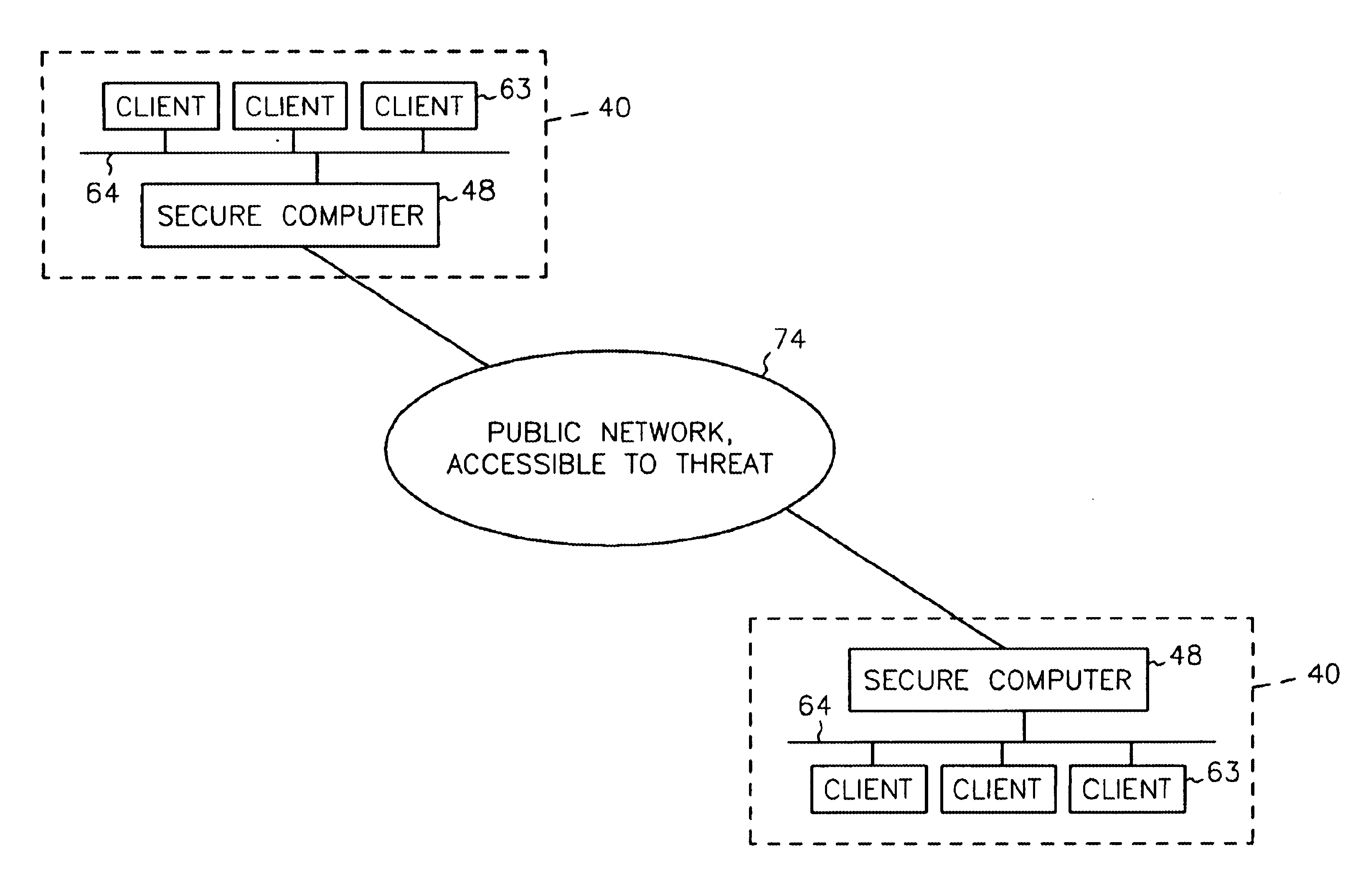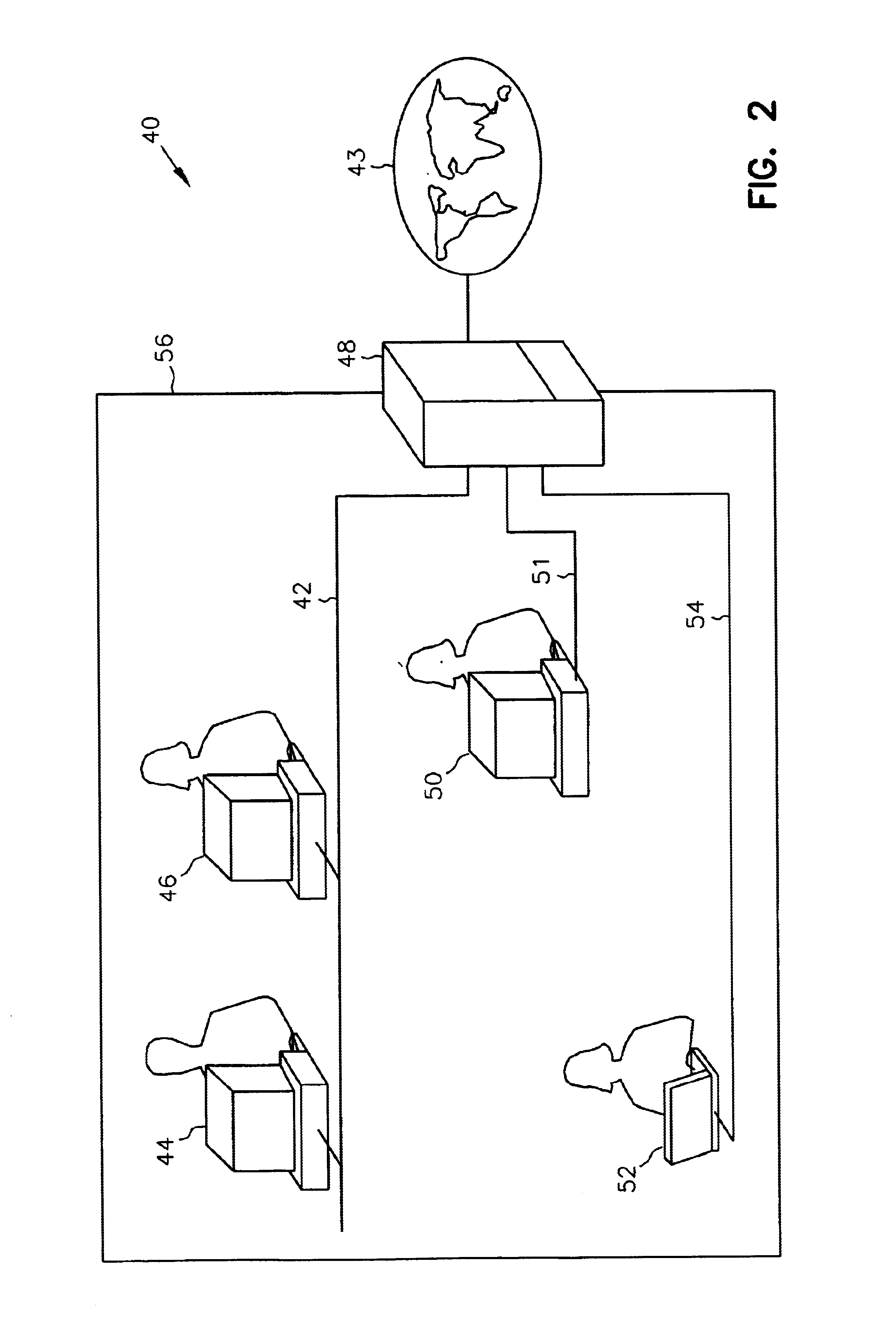System and method for providing secure internetwork services via an assured pipeline
a technology of internetwork and pipeline, applied in the field of computer security, can solve the problems of intentional violation of security policies, workstations, servers, even the connecting network, and the risk of free flow of information being disastrous to those systems processing sensitive or classified information,
- Summary
- Abstract
- Description
- Claims
- Application Information
AI Technical Summary
Problems solved by technology
Method used
Image
Examples
Embodiment Construction
In the following Detailed Description of the Preferred Embodiments, reference is made to the accompanying Drawings which form a part hereof, and in which are shown by way of illustration specific embodiments in which the invention may be practiced. It is to be understood that other embodiments may be utilized and structural changes may be made without departing from the scope of the present invention.
A secure wide-area access system 40 is shown in FIG. 2. In FIG. 2, an internal network 42 connects workstations 44 and 46 to secure computer 48. Internal network 42 is separated from a wide-area network 43 (such as the Internet) by secure computer 48. Secure computer 48 is also connected to a system administrator workstation 50 through a dedicated line 51 and to a workstation 52 through a serial interface 54. Secure computer 48 and workstations 44, 46, 50 and 52 make up an organizational enclave 56 of data. The enclave is a "logical" enclave in that there is no requirement that the prot...
PUM
 Login to View More
Login to View More Abstract
Description
Claims
Application Information
 Login to View More
Login to View More - R&D
- Intellectual Property
- Life Sciences
- Materials
- Tech Scout
- Unparalleled Data Quality
- Higher Quality Content
- 60% Fewer Hallucinations
Browse by: Latest US Patents, China's latest patents, Technical Efficacy Thesaurus, Application Domain, Technology Topic, Popular Technical Reports.
© 2025 PatSnap. All rights reserved.Legal|Privacy policy|Modern Slavery Act Transparency Statement|Sitemap|About US| Contact US: help@patsnap.com



